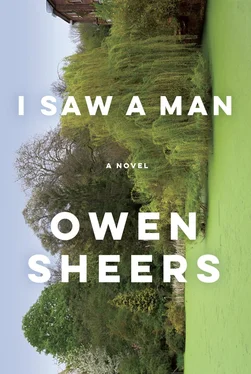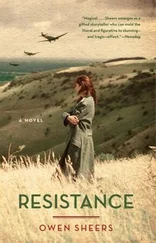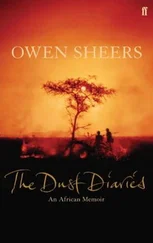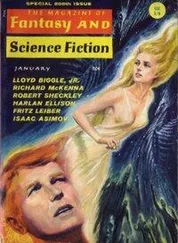But now Lucy’s would be an imagined life, existing only in her mother’s projections of who her daughter might have been. The ache of her loss became as familiar to Samantha as breathing, or opening her eyes to see. It was just there, and would always be there, a translucent presence behind the scenes of the day. A shadowing that hurt, but which Samantha would never want to live without, its essence now being all that was left of Lucy beyond the ephemera of memory, photographs, and film, all of which were too painful to ever look at for long.
Rachel, once she’d emerged from the numbing of her own shock, soon became sensitive to these depths of her mother’s remembering. In the light of their altered relationship, she’d developed a breed of admiration for Samantha, which she felt but did not yet understand. From out of nowhere, death, like a meteor, had struck their home. There had been sadness, rupture. They were scattered by its impact. Her father was now a man who met her from school, or took her out on the weekends. He was no longer bound by the family walls. She, herself, had been sent far from her own knowledge, and her mother, too, had been on a long journey. But now, from all this disturbance, her mother was back and revealing a warmth Rachel had never previously known. Focused and strong, as if she was recklessly pouring love directly into her. She asked Rachel more questions, her opinion, as if she were eightteen, not eight. She allowed her to stay up late, to stay on the sofa with her, watching TV together. Sometimes Rachel became aware her mother wasn’t watching the screen at all, but was watching her instead. Without intention or observation, but merely to witness her. Over breakfast, as Samantha asked her which blouse she should wear, or which skirt, it could seem as if they were impossible sisters, rather than a mother and daughter. And then there were those other times, too, when their roles felt reversed completely. When, on entering a room and discovering her mother to be there, Rachel would sense Samantha’s darkness, and would come to her silently, folding her body into its contours in an attempt to at once absorb and soothe her pain.
For Michael, every minute spent with Samantha and Rachel was like torture. There had yet to be a moment, in all the seven months since he’d left their house that day, when, being in their presence, he hadn’t felt acutely the sadness of the loss he’d caused, or that somehow Rachel cradled a secret knowledge of her sister’s death. And yet at the same time being with them was the only salve his conscience knew. To be there, contributing to their recovery, their new lives. It was both his privilege and his punishment. In practice this often meant no more than giving his encouragement or advice to Samantha, or coming round for a drink or some food, or agreeing to look after Rachel on nights when she had to be out. It was as simple as being her friend. Someone who’d known them before, and with whom, now that she was ready, she could talk about her loss as an equal, as a colleague in grief. No one else Samantha knew had lost anyone other than their parents. No one else had had death enter, so suddenly, their lives. Michael, however, had been there before her, felt and thought his way through its aftermath. And so she’d found herself looking to him for markers, for acknowledgement and consent. He made her feel normal and, perhaps more important, possible, a woman shaped by her daughter’s loss, not defined by it. A woman who would still extract joy from life, not despite her grief but because of it.
Alongside his involvement with Samantha in the wake of her grief, Michael’s own life continued to expand and gain momentum in the diminishment of his. In December, just before he travelled to Sussex to join Samantha and Rachel at Martha’s for Christmas, he completed the first draft of The Man Who Broke the Mirror. It was shorter than he’d expected, and not the book he’d set out to write. The exploration of Oliver’s thesis had become no more than a subplot, a hinterland to the account of his life over those two years that Michael followed him. A portrait of a man in emotional and intellectual extremis, a thinker and a drinker burning brightly as he burnt out.
The book was imperfect, and Michael knew when he submitted it to his agent that unlike what he’d said to Samantha about BrotherHoods, it was far from “cooked.” But that it had been written at all was a personal achievement for him. It had begun, in those early months in his new flat, as no more than a muscle memory of routine. As a way of tricking his mind and his body into living again. There’d been no financial imperative for Michael to write it. BrotherHoods was still selling well in the U.S., and although he’d sworn not to touch it, there’d also been the compensation money and the payout from Caroline’s insurance, too. In the writing of the book, however, Michael had rediscovered a rare peace in the age-old formation of experience into words. Not necessarily always in service to the broader story, but just in honour of certain minutes, even seconds. Past moments he was able bring into being in a way he often wished he could in real life, but which he knew was possible only like this, at his desk, on the page.
Such was the solace Michael found in his writing that on delivering The Man Who Broke the Mirror he’d immediately embarked on a new project, even before his agent had finished reading the draft. This was to be a book closer to home, in every sense of the phrase. With his silent promise to Samantha and Rachel he had bonded himself to London, to their street and to his flat beside their home. So this is where he went looking for his next book, one in which he would immerse himself not just in the life of an individual subject, but in the stories of four houses and the families who’d lived in them. The houses had once all formed part of South Hill Drive, each built on a plot of land where a modern block of flats much like Michael’s own now stood. It was a map in a local museum that had first brought these buildings to his attention. The map, of the Heath and its surrounding streets, was marked with a pattern of black dots, each marking the site where a bomb had fallen during the air raids in the Second World War. Instinctively, Michael had looked for his own street on the map, and then his own flat within it. A single black dot marked its position exactly. He looked at the other three dots scattered around the loop of South Hill Drive. All of them marked other modern blocks, built after the war and slotted into the sweeping curves of the original houses.
The research that such a book would require — hours at the Public Record Office in Kew, or trawling the local archives in Hampstead — promised Michael the scope and structure of a regular routine. But beyond this he couldn’t say exactly why this project had appealed to him above others. He knew there were probably reasons for his preference that at this stage in his planning he’d rather not look at directly — a historical study of death from the air, an exploration of the relationship between a family and its home. But he knew, too, that the project’s attraction was in some way associated with his penance, a private accumulation of gestures on the other side of those scales. And that it was about the nature of ghosted existence as well, the way Caroline had appeared to him in that bath. Or the way every time he passed the Nelsons’ staircase he still saw, with such clarity, the detail of Lucy’s falling. Every house in the street was layered with such existence, the spaces within them thick with lived human lives. But the four modern blocks of flats were haunted by entire buildings, not just people. Homes that had gone in a matter of seconds. And it was this, Michael sensed, that was drawing him. The prospect of re-creating the houses themselves as well as their inhabitants. Of rebuilding the very vessels and witnesses of the living that had occurred within them. As if, in having seen one ghost and created another, Michael was leaving himself no other choice than to immerse himself in an endeavour of multiple resurrection.
Читать дальше











